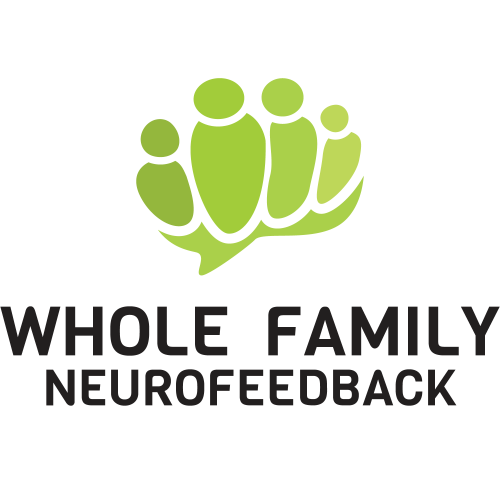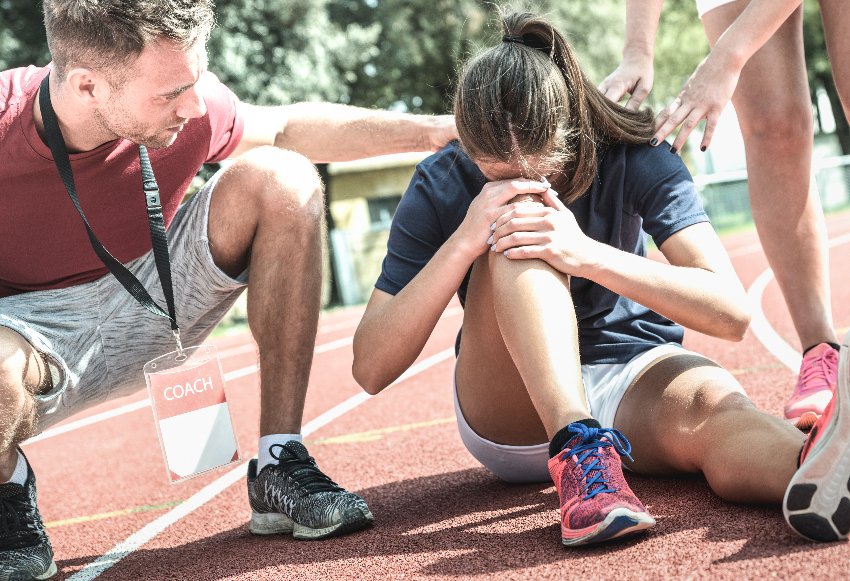Why Mindset Shifts Are The Key To A Successful Sports Injury Recovery
Millions of kids experience sports injuries every year but recovering from one isn’t easy. Especially if you have a serious sports injury – one that takes you out of the game for a long time.
When this happens there’s a lot of uncertainty and unanswered questions.
You’re wondering….
When can I get back to my favorite sport?
Is this going to impact my high school sports career? My college sports career?
Am I going to get hurt again?
Will this impact my talent and ability?
Today, we’re going to discuss common sports injuries and how to use mindset shifts and neurofeedback to increase your physical resilience after an injury.
Most Common Sports Injuries
Did you know, more than 3.5 million children ages 14 and younger get hurt playing sports? In organized sports, 62% of injuries occur during practice.1
Sports injuries are very common among kids of all ages. Some of the most common ones are:2
- Fractures
- Dislocations
- Sprains/strains
- Tendonitis
- Bursitis
- Rotator cuff injuries
- Torn ligaments and tendons
Sports injuries can be acute or chronic. Acute injuries happen suddenly when a specific event leads to injury to the body.
Like when you:
- Fall
- Collide with someone on the field
- Hit your head during a game
A chronic injury develops gradually, over time, usually from overuse of a particular body part.
Whether you have an acute or chronic injury, you want to get back to playing as soon as possible. In fact, one of the most common questions people ask is, how can I heal from a sports injury faster?
How Do I Heal A Sports Injury Faster?
It’s understandable you want to get back to doing what you love but the truth is, there is no quick way to heal a sports injury.
The best you can do to heal from your sports injury as “fast” as possible is to follow all instructions from your sports medicine team: your doctors, physical therapists, and coach.
You don’t want to push yourself so hard that you have a setback. With sports injuries, slow and steady leads to the best recovery. There are many different sports injuries so your treatment and recovery will depend on your specific injury.
Healing can take time, which is frustrating. You’re an active athlete so sitting around is hard. While you’re following your doctor’s orders, there are some mindset shifts you can make that will make your recovery easier.
5 Mindset Shifts To Help Your Recovery
When you think of sports injuries, the first thing you think about is healing your physical body. If you have a severe or chronic sports injury, working through mental, emotional, and mindset challenges is extremely important. But it’s one of the most overlooked aspects of sports injury recovery.3
It’s natural to feel stress, frustration, anger, and even depression during this process. Here are five ways you can take care of your mental health and create a flexible mindset while recovering.
1.) Recognize your feelings
Rehabilitation psychologists say that a person’s ability to cope and resiliency after an injury help shape their recovery. Start by recognizing your feelings for what they are. You might feel angry, sad, frustrated, anxious, or confused. You’re probably going through many different emotions in a single day. It’s important to validate your feelings and know that it’s ok to feel the way you do.
Your feelings are temporary and will change as your recovery progresses.
2.) Lean on your support system
After you give yourself permission to feel all of those emotions, leaning on your support system helps. Studies show that social support is crucial to recovery from a sports injury.4
Leaning on your support system can help you manage daily activities or tasks that are difficult because of the physical limitations of your injury. Having help and support can reduce your frustration of losing your independence while your recover.
When you’re not able to participate in your normal activities, social support can help you feel less alone and more optimistic about your recovery.
3.) Create optimism
Being optimistic about the future doesn’t have to be as clichè as it sounds. If you’re resisting the idea of being optimistic because you think it means you have to be happy when you’re not, that’s not what it means.
Psychologists define optimism as:5
- Hopefulness
- Feeling that your goals will eventually be fulfilled
- Anticipating positive outcomes
- Having confidence in reaching your goals
Creating optimism can mean focusing on what you can do (instead of what you can’t do). Your brain wants to focus on the problem at hand but you can consciously shift your mindset. You can focus on the goals you set for yourself, what you’re currently able to do, and believe that you’ll reach all of your sports recovery goals.
As you set small goals for yourself and achieve them, you’ll feel more optimistic.
4.) Focus on what you can control
When healing from a sports injury, there are a lot of things out of your control. Focussing on what you can control is really important.
Coming to terms with what you can’t control can be empowering because once you realize what is out of your control, your can let it go from your mind.
You can’t control:
- If you need surgery
- Your healing time
- The amount of physical therapy you’ll need
- When you’ll be cleared to return to your sport
You can control:
- Your mindset about your injury
- How often you participate in physical therapy
- Creating a strong support system
- Eating healthy to promote healing
- Following all instructions from your healthcare team
Focussing on what you can control can help you set realistic expectations and goals.
5.) Set realistic goals and expectations
It’s important not to rush your recovery and follow instructions from your sports medicine team – your doctors, physical therapists, and coaches. Depending on your injury, you might need to take small steps as you rehab your body. It’s important to set realistic goals and expectations for yourself.
Your goals are going to depend on what you’re physically capable of doing. If you just had surgery, it’s not realistic to run a mile – even if you want to. Working with your healthcare team to understand your injury and the recovery process is really important.
Don’t forget to ask questions. The more questions you ask your physical therapist and doctor, the better you’ll understand your treatment and recovery. Understanding the recovery process will reduce your frustration because you’ll know exactly what to expect every step of the way.
Bounce Back With Neurofeedback
Neurofeedback is a tool that helps with physical resilience after a sports injury. It’s a brain training system that monitors your brain activity and helps your brain self-correct when it detects sudden changes.
NeurOptimal® non-linear neurofeedback is great for sports injuries because you can buy or rent a machine to use at home. Doing it at home means one less appointment to go to. NeurOptimal® is the most advanced, professional-grade at-home neurofeedback device on the market.
If you are healing from a sports injury NeurOptimal® can help you:
- Live within your limitations better
- Increases resilience and flexibility (which makes coping with difficult situations easier)
- Promotes relaxation which helps to improve sleep habits
- Helps family members contribute to the overall happiness and resilience of the injured person
- Improves concentration, resource management, problem-solving, and logic
- Reach peak performance once you’re back in the game
So How Does NeurOptimal® Neurofeedback Work?
During a training session, you’ll simply listen to music or watch a movie. The software monitors sudden changes in your brain’s electrical activity. When these changes are detected, there is a brief pause in what you’re listening to. That simple pause is like a reset for the brain – bringing you back to the present moment.
NeurOptimal® is a dynamic system because it’s individualized to you. It’s FDA-approved as a general wellness product and has helped many people with sports injuries change their perception of their situation.
NeurOptimal® is used by:
- Dutch Olympic Rowing Team
- The Oakland A’s
- Sugar Beets Pro Women’s Cycling Team
Are you interested to learn more about neurofeedback?
Do you want to know if it can help you while you’re healing from your sports injury?
Fill out our contact form here or call us at 303-222-5118
We’re happy to answer all your questions!
References
- Sports Injury Statistics. Johns Hopkins Medicine.
- Sports Injuries. National Institute of Health.
- Physical Resilience After Injury. Whole Family Neurofeedback.
- Quale, A. J., & Schanke, A.-K. (2010). Resilience in the face of coping with a severe physical injury: A study of trajectories of adjustment in a rehabilitation setting. Rehabilitation Psychology
- Optimism. American Psychological Association.

